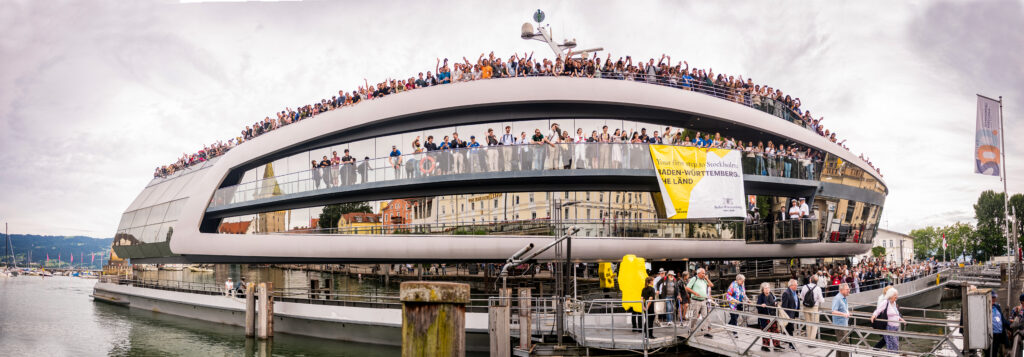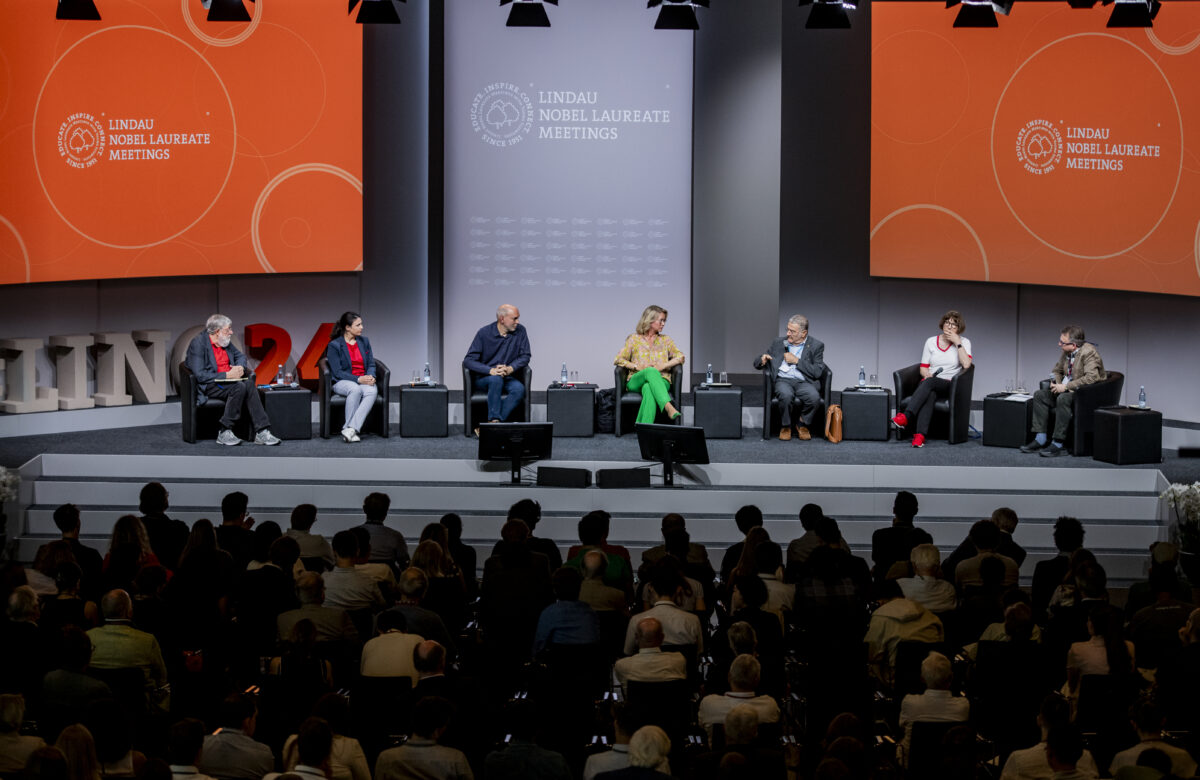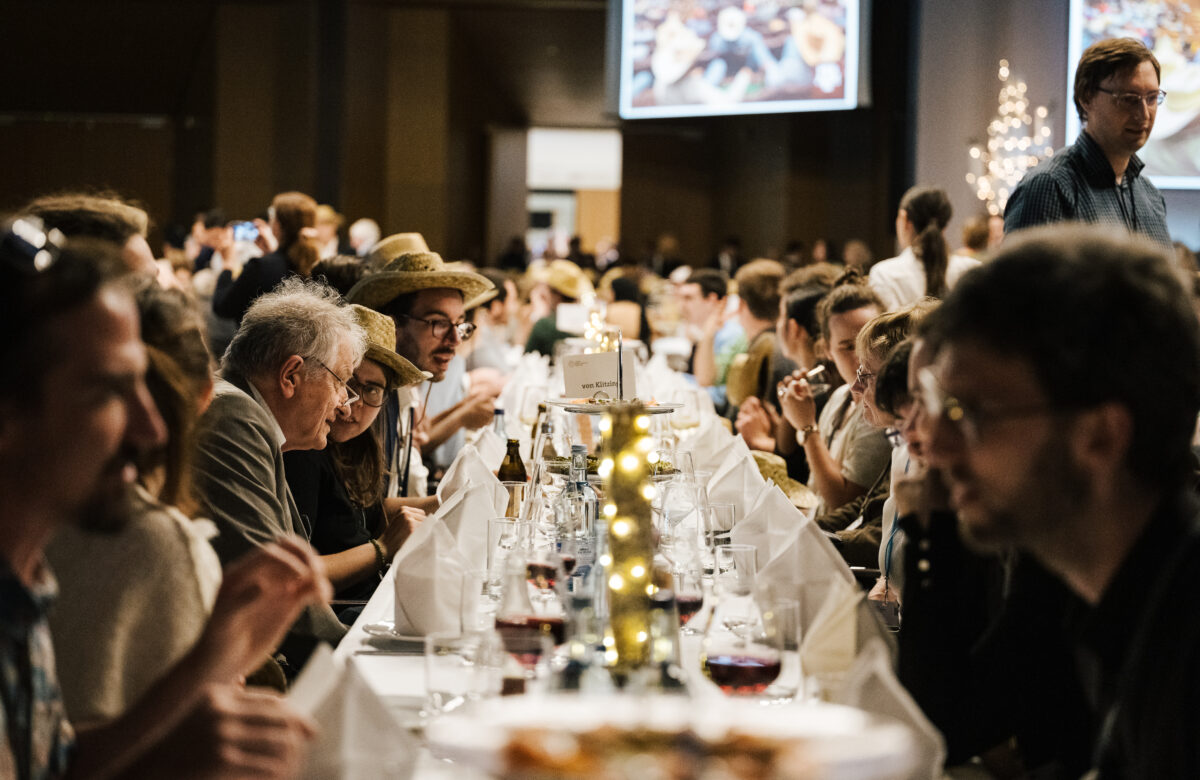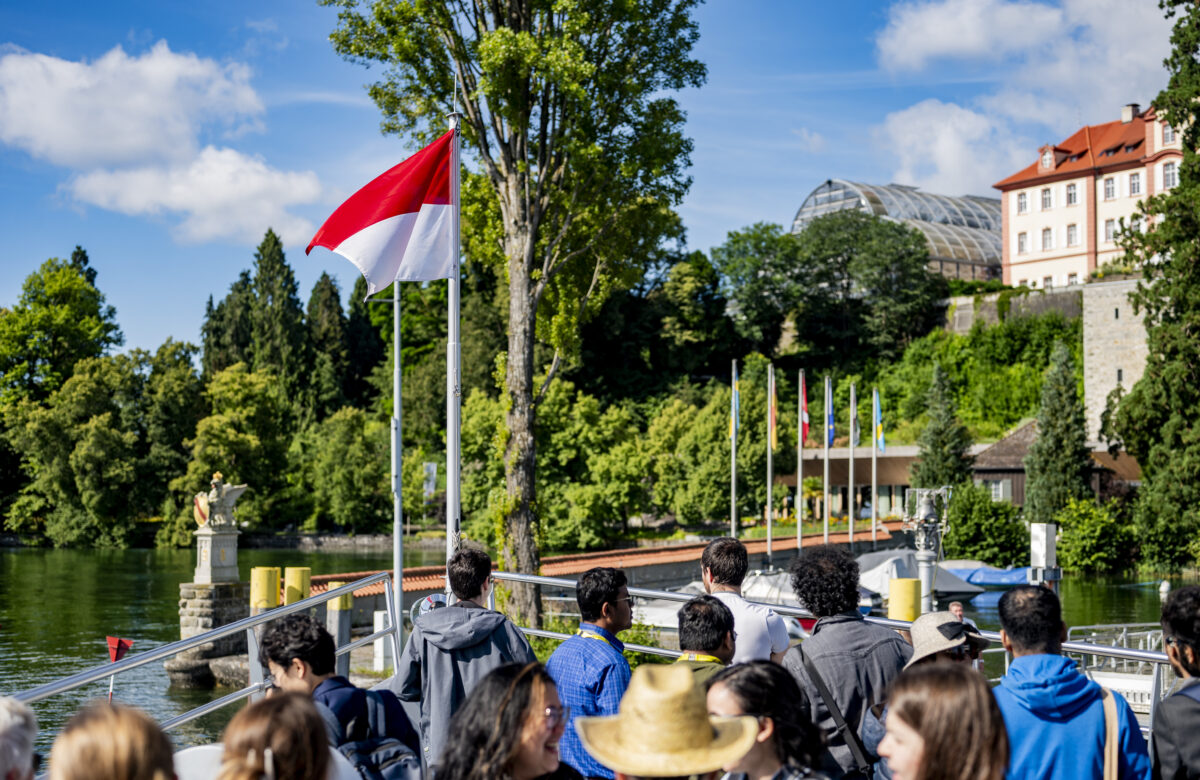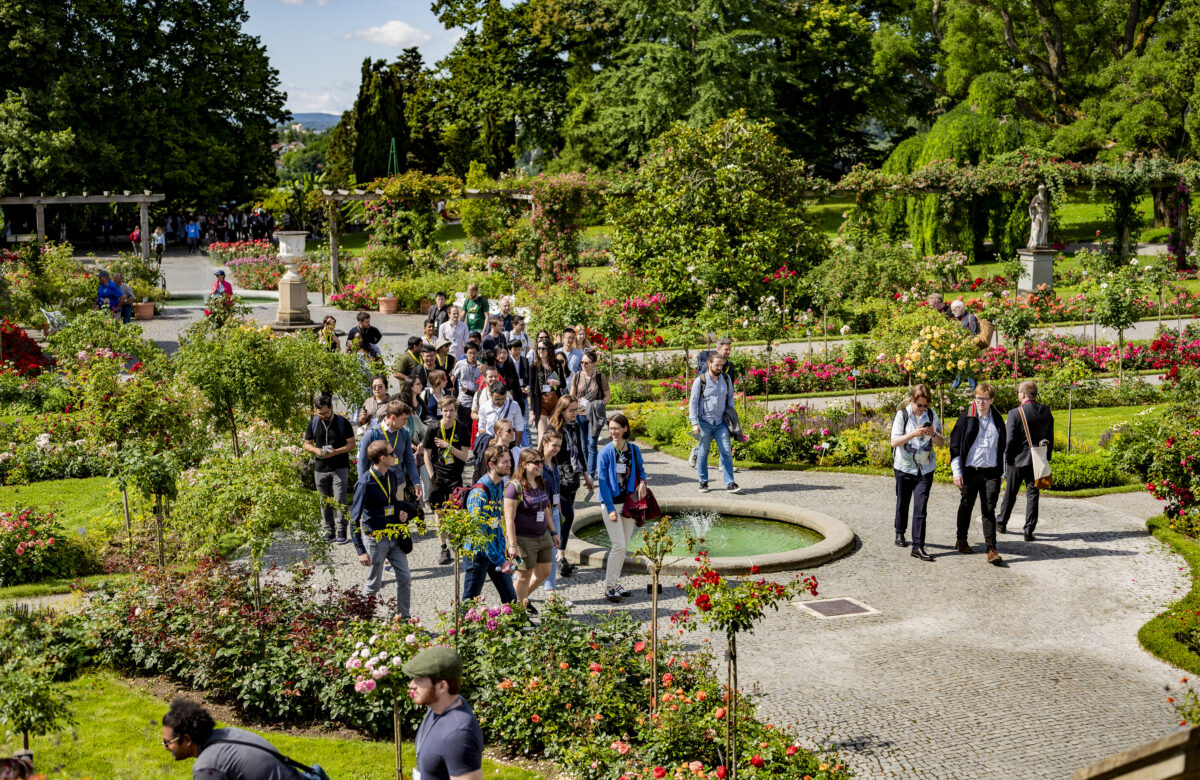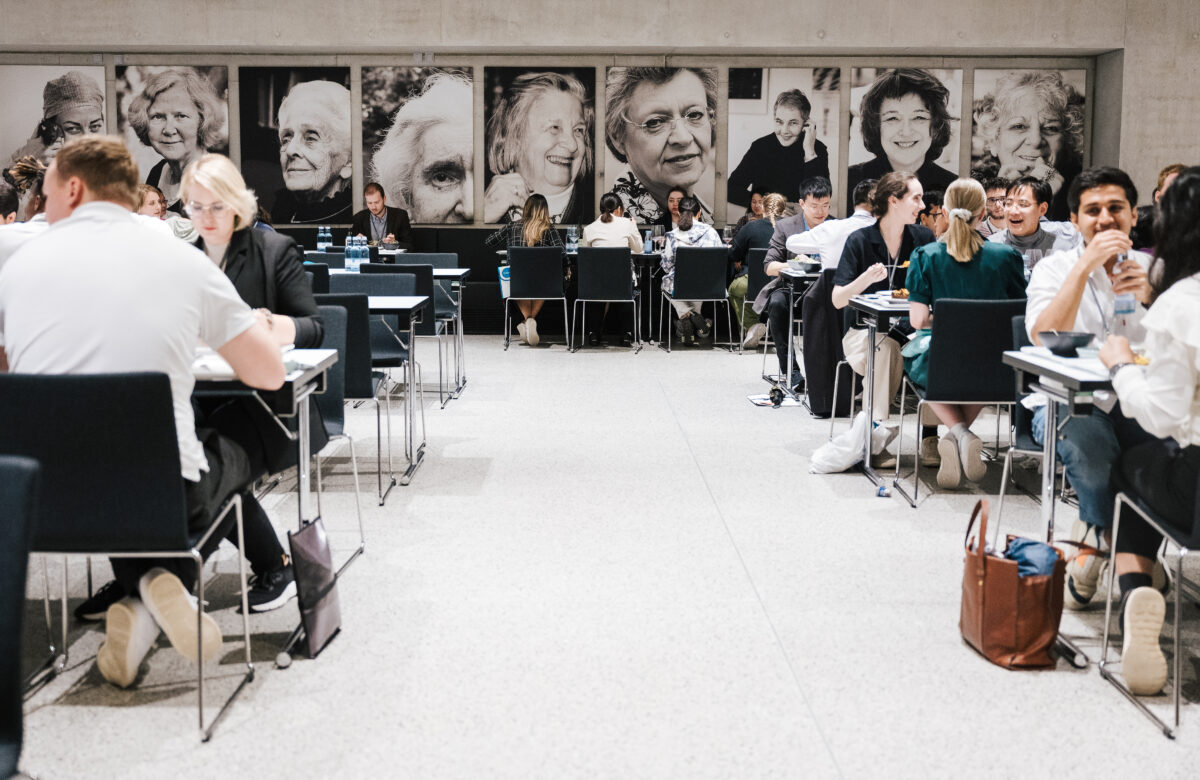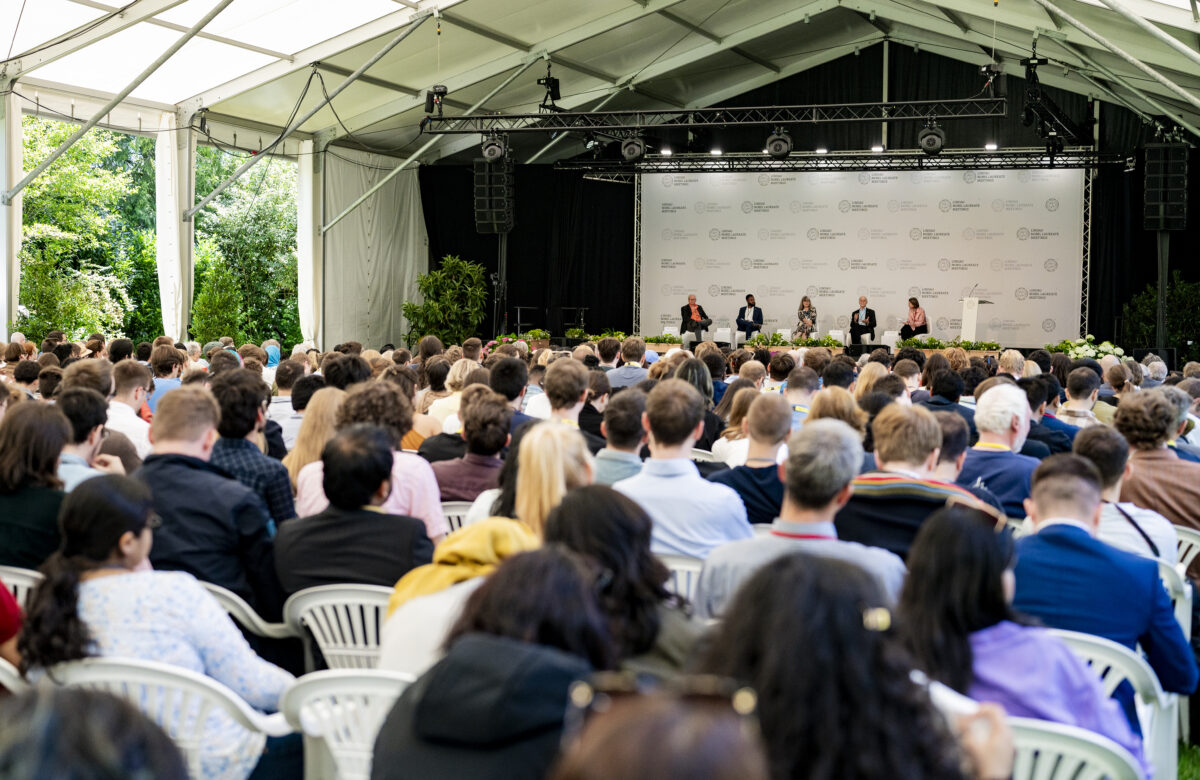- Academic Life
- Series
Ph.D. student Bahareh Hosseini Fakhar shares her experience on her return from the 73rd Lindau Nobel Laureate Meeting.
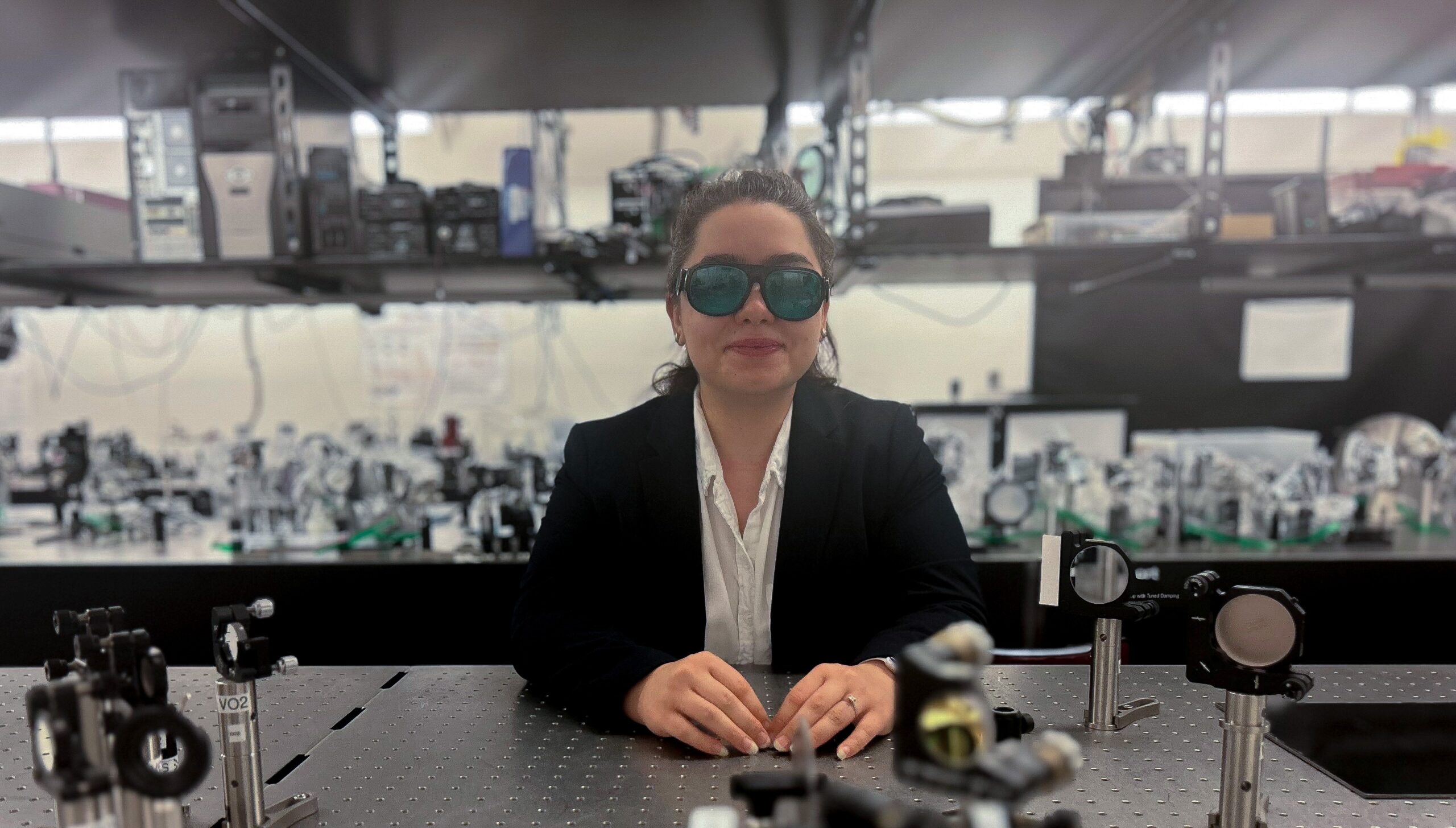
Bahareh Hosseini Fakhar, a Ph.D. student at the Institut national de la recherche scientifique (INRS), was selected to take part in the 73rd Lindau Nobel Laureate Meeting.
Invitations to the prestigious conference are coveted by up-and-coming scientists from all over the world for the incredible opportunity they represent—to meet and exchange ideas with some 30 Nobel laureates over the course of a week. This year, the event took place from June 30 to July 5, 2024, in the German town of Lindau.
Bahareh Hosseini Fakhar is a student in ultrafast photonics at the INRS Énergie Matériaux Télécommunications Research Centre, under the supervision of Professor François Légaré and co-supervision of assistant professor Reza Safaei. Her application was endorsed by Canadian researcher Donna Strickland, 2018 Nobel laureate and recipient of an honorary doctorate from INRS in 2019.
Bahareh Hosseini Fakhar’s exceptional track record stood out despite fierce competition, marking her as one of the next generation’s top scientists on the international scene.
We asked her a few questions to reflect on her extraordinary experience.
What were the highlights of your experience at the Lindau Nobel Laureate Meeting? What did it bring you as a young scientist?
Participating in the 73rd Lindau Nobel Laureate Meeting was an exciting experience and an extraordinary honour. Being chosen for this prestigious event was a unique opportunity to learn from the brightest minds in science. I believe it will prove to be an important chapter in my career. I was grateful to be able to meet such a distinguished community of scientists.
The meeting exceeded all my expectations and was filled with numerous highlights and inspiring interactions among around 35 Nobel laureates and 650 young scientists from 90 different countries.
One of the most remarkable aspects was having the opportunity to meet and engage with Nobel laureates such as Professor Donna Strickland, Professor David J. Wineland, Professor George Smoot, Professor Steven Chu, and Professor Georg Bednorz. The open discussions with these distinguished scientists covered a wide range of topics, from space and atoms to their funny anecdotes from the Nobel Prize award ceremony.
Furthermore, interacting with young scientists from all over the world was a unique experience. Everyone was open to exchanging ideas on various important topics, which fostered interdisciplinary contacts and encouraged me to broaden my perspective rather than focusing solely on one topic.
Communicating with highly motivated young scientists from diverse educational backgrounds made me reflect on different aspects of my current projects and their potential applications in other fields of physics. I hope that the new connections I have made will result in exciting collaborations and long-lasting friendships.
What did you want to ask the laureates during the meeting?
During the meeting, I was eager to ask the laureates for advice on achieving success in their fields and in science in general. What key factors contributed to their achievements? How did they approach the scientific work that led to them winning the Nobel Prize? How did their lives change after receiving such a prestigious award?
The responses were captivating. Many laureates emphasized that success comes from following what truly inspires you. They advised us to focus on what we love to do and what we are passionate about achieving. They highlighted that, while courage is essential, it must be accompanied by curiosity. The desire to understand concepts deeply and the drive to explore new frontiers are crucial in scientific endeavours.
They also reminded us that science is not just about working with machines or lasers but also about collaboration and working with people. They encouraged us by saying that we all have the potential to be successful scientists, and we can find a way, our own scientific way, to describe the world around us. Their words were incredibly motivating and reinforced the importance of perseverance, passion, and curiosity in the pursuit of scientific excellence.
What is the relation between your field of research and those of the Nobel Prize laureates attending the meeting?
As a dedicated PhD student in ultrafast photonics at INRS, my research focuses on cutting-edge laser technologies, specifically compressing laser pulses through self-phase modulation in gas-filled hollow-core fibres—a technique pioneered by Mauro Nisoli and influential in the work of the 2023 Nobel laureates Pierre Agostini, Ferenc Krausz and Anne L’Huillier.
At ALLS, a laser facility and one of INRS’ distinguished laboratories, I engaged with high-power laser sources utilizing chirped-pulse amplification. This work was inspired by the groundbreaking contributions of Nobel laureates Professor Donna Strickland, who was granted a Honorary Doctorate by INRS, and Professor Gérard Mourou, which have significantly transformed the field of powerful short-pulse laser sources. I find it especially thrilling to work in a domain that intersects with the expertise of these esteemed Nobel laureates.
